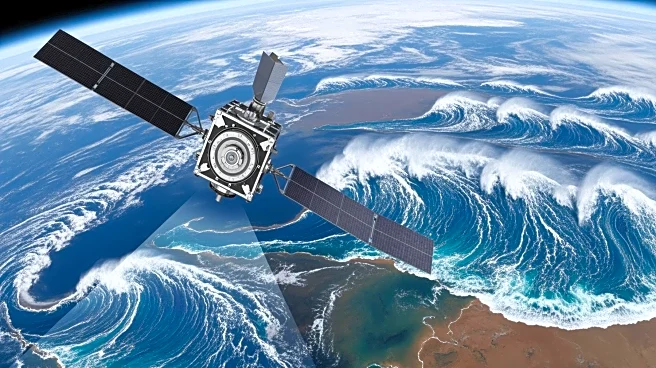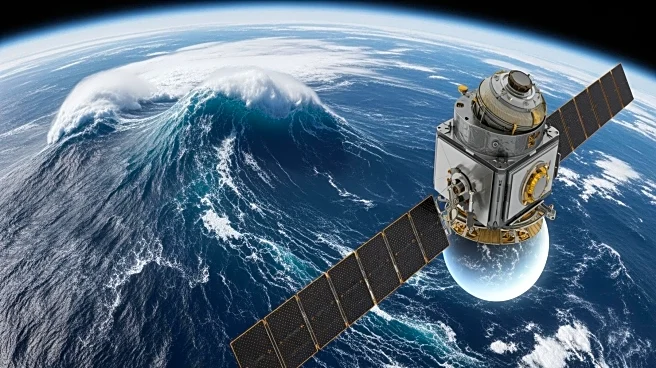What's Happening?
Recent satellite data has captured record-breaking ocean waves, reaching heights of nearly 20 meters, as reported by the European Space Agency (ESA). These waves, generated by distant storms such as Storm Eddie in December 2024, demonstrate the ability
of storm energy to travel vast distances across oceans. The Surface Water and Ocean Topography (SWOT) radar imaging has provided a global view of these phenomena, showing that shorter, steeper waves carry significant storm energy, contrary to previous assumptions that longer swells were more impactful. These waves have been observed to cause erosion and flooding on remote coastlines, highlighting their destructive potential even when storms do not make landfall.
Why It's Important?
The ability of ocean swells to transport storm energy across vast distances has significant implications for coastal communities worldwide. Understanding the dynamics of these waves can improve predictive models and early warning systems, potentially mitigating the impact of erosion and flooding. This research challenges long-held beliefs about wave energy distribution, suggesting that shorter waves may pose a greater threat than previously thought. The findings could influence future coastal management strategies and disaster preparedness efforts, emphasizing the need for comprehensive monitoring and analysis of oceanic conditions.
What's Next?
Further research and monitoring are expected to continue, utilizing advanced satellite technology to refine understanding of wave dynamics and storm energy distribution. Coastal regions may need to reassess their preparedness and response strategies in light of these findings. Collaboration between scientific communities and policymakers will be crucial in developing effective measures to protect vulnerable coastlines from the impacts of these powerful ocean swells.
Beyond the Headlines
The study of ocean swells and their energy distribution raises questions about the long-term effects of climate change on storm patterns and ocean behavior. As global temperatures rise, the frequency and intensity of storms may increase, potentially leading to more frequent occurrences of massive waves. This underscores the importance of integrating climate change considerations into coastal management and disaster response planning.













